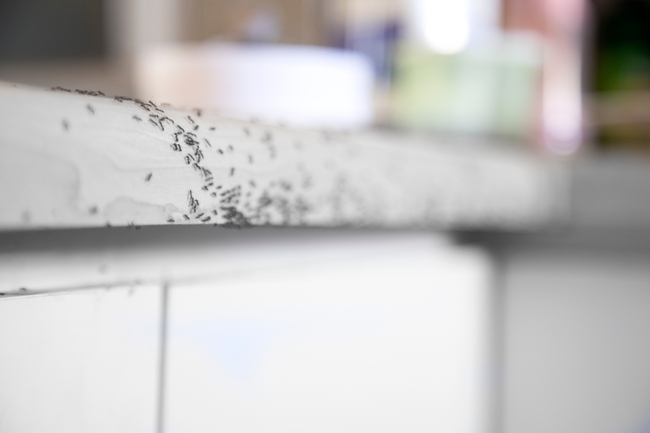Spotting ants in the home or yard is no reason to reach for insecticide sprays or call an exterminator. UC Cooperative Extension experts say the insects can be managed by residents in ways that are effective, inexpensive, safe and environmentally kind.
“Ants are probably the No. 1 most common pests of our homes and gardens,” said Carolyn Kinnon, an environmental horticulturist and instructional associate at Mira Costa Community College. “Scientists find chemicals in our waterways that include pesticides commonly used to kill ants.”
Kinnon teamed up with UCCE community education specialist Scott Parker to present a Healthy Garden-Healthy Home online ant workshop during the COVID-19 pandemic to take the place of a planned in-person event. Healthy Garden-Healthy Home was initiated in 2005 with a grant from the California State Water Resources Control Board and continues with funding from San Diego County. With the move online, the workshop attracted four times more participants that usual.
“A silver lining of the COVID disaster has been our ability to reach out to many more individuals,” Parker said.
Healthy Gardens-Healthy Homes aims to cut residents' use of chemicals and reduce soil erosion that can wash into gutters with irrigation or rain water, course through storm drains and into streams, reservoirs and the Pacific Ocean. During the recent UCCE webinar on healthy ant control, Kinnon introduced science-based solutions that can be combined to keep ants at bay.
Use ant biology to battle ants
Ants are always looking for food and will forage any accessible source. Short circuiting this biological need is the first approach to controlling the pest. Outside, ants are often attracted to a sticky, sweet honeydew that pests like aphids leave behind when they feed on plants. Washing off aphids and honeydew with a sharp stream of water from the hose reduces the food source.
In spring, Kinnon said, ants like to feed on proteins, like seeds, nuts, dog food and other fatty substances. Fallen nuts, bird seed and leftover pet food should be discarded to reduce ant activity.
“When honeydew production from sap-sucking insects declines in the hot summer, and there is an absence of food sources outdoors, ants may come indoors,” she said. “Ants will travel several hundred feet in search for food.”
Removing inside food sources – like spills on counters and floors – and blocking access – by filling in holes and cracks – is the first defense against an indoor ant invasion. Kinnon recommends keeping food containers clean and sealed, rinsing empty recyclables – particularly sugar-sweetened beverages – and wiping up grease on barbecues and stove tops.
Wipe up ants and their chemical trails with an all-purpose cleaner, and fill tiny gaps, cracks and holes with caulk to make their entry difficult.
Managing expectations
Another way to achieve environmentally friendly ant management is coming to terms with the fact that they can't be eliminated from outdoor areas.
“Our goal is to focus on reducing population numbers,” Kinnon said. “We have to tolerate a certain number.”
Spraying a pesticide on an ant trail or sprinkling granular pesticides will only kill a fraction of the ants in the yard. Those materials can run off and pollute watersheds.
Baits
If cleaning up food sources, exclusionary measures and increased tolerance aren't enough, pesticide baits are an additional integrated pest management tool.
“This works because female worker ants take the bait back to the nest and feed it to other ants in the colony,” Kinnon said.
The bait must be slow acting so it doesn't kill the worker before she gets back to the colony. Kinnon recommended baits with no more than .5% active ingredient. For best bait placement, follow trails to find the nest and place the bait close by in a safe bait station. If the nest can't be found, the bait station can be placed along the trail.
